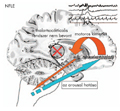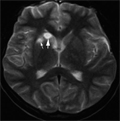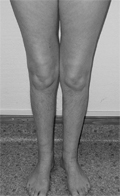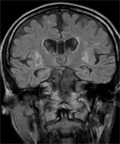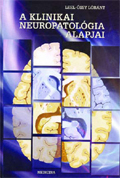The eLitMed.hu medical portal uses computer cookies for convenient operation. Detailed information can be found in the Cookie-policy.
Clinical Neuroscience - 2007;60(09-10)
Content
[ANIMAL MODELS OF CEREBRAL ISCHEMIA - TESTING THERAPEUTIC STRATEGIES IN VIVO]
[Acute cerebral ischemia is one of the leading causes of mortality and chronic disability worldwide. Animal models of focal (stroke-type) and global (cardiac arrest-type) ischemia have been established to investigate the morphological, functional and molecular consequences and to design therapeutic strategies for the improvement of ischemic injury. Despite highly beneficial effects in experimental studies, most human clinical trials were disappointing, suggesting inefficacies in the design and/or translation of animal experiments. In this review the pathophysiologically relevant particularities of ischemia models will be discussed to provide a rational basis for the proper selection of animal models for testing therapeutic strategies under experimental conditions.]
[IDIOPATHIC NOCTURNAL FRONTAL LOBE EPILEPSY - AN UNUSUAL EPILEPSY SYNDROME]
[This paper provides an overview of the development of conceptions about nocturnal frontal lobe epilepsy syndrome and describes the electro-clinical characteristics, the identity of the genetic and sporadic variant, and the relationship of the EEG and clinical signs with NREM sleep specific features. The differential diagnostic difficulties and open questions on the pathomechanism are emphasized especially in relation with the lack of epileptiform EEG signs, circumsribed seizure onset zone and cognitive deficits. The relationship of frontal automatisms and NREM parasomnias are also discussed in relation of the place of nocturnal frontal lobe epilepsy among other epilepsies.]
[EFFECTS OF ANTIEPILEPTIC DRUGS ON MOOD OF PEOPLE WITH EPILEPSY]
[This article deals with the effect of antiepileptic drugs on mood when applied in epiletic patients. The author points that depressive symptoms occur significantly more frequently in epilepsy and there are more common factor in the mechanism of action of the antiepileptic and antidepressive agents. The relevant literature is surprisingly poor. Primary and large analysis regarding affective disorders coexisting with epilepsy is still lacking. From this aspect some antiepileptic drugs have not been investigated at all. The consequences of the papers originates from indirect sources like adverse events profiles of the study drugs or from psychometric tests performed for avoiding exclusion criteria of psychological nature. On the other hand the paper deals also with the difficulties of such kind of investigations concerning the classification of depressive signs presenting with epilepsy, special considerations of inclusion of appropriate patients and particular limits of the measuring and follow-up of the observed effect. As the result of the detailed analysis of the literature the author recommends lamotrigine, carbamazepine and oxcarbazepine as first choice antiepileptic drug for epileptic patients suffering from depressive disorder, too. On the contrary, phenobarbital, topiramate and vigabatrin are able to worsen the affective symptoms. Aimed, randomized, controlled studies are necessary for recognizing the whole spectrum of psychotropic effects of antiepileptic drugs and for their successful and individually tailored application in patients in their comorbide states. Author calls the attention for the importance of the treatment of depressive states frequently occurring in epileptic patients. These symptoms modify the compliance of the patients and are able to influence even the epileptic process itself.]
[POSSIBLE ROLE OF THE BASAL GANGLIA IN THE GENERATION OF THE N30 POTENTIAL OF THE MEDIAN NERVE SOMATOSENSORY EVOKED POTENTIALS]
[Background and purpose - The origin and afferentation of the frontal N30 component of the median nerve somatosensory evoked potentials (SEPs) have not yet been fully elucidated. The aim of this study was to assess the possible selective impairment of the N30 component in patients with lacunar infarcts of the basal ganglia as compared to patients with lacunar infarctions sparing the basal ganglia and to a group of healthy subjects. Methods - Median nerve SEPs were measured in ten patients with lacunar infarctions of the brain (but no cortical atrophy or leukoaraiosis) and 13 healthy volunteers. Four patients had lacunar infarctions affecting the basal ganglia and 6 patients had lesions affecting other structures. Results - In two patients with lesions affecting the head of the caudate nucleus, there was no identifiable N30 component on the affected side. In one patient with bilateral lesions of the globus pallidus, the amplitude of the N30 component was significantly reduced. In one patient with lesion of the tail of the caudate nucleus, the N30 component was unaffected. The amplitude of the N30 component was also reduced in two patients with frontal subcortical white matter lesions. In all the other subjects, we recorded normal N30 components on both sides. Conclusion - Our results further support the importance of the basal ganglia, especially the head of the caudate nucleus in the generation of the N30 component of the median nerve SEPs.]
[SIMULTANEOUS CENTRAL AND PERIPHERAL NERVOUS SYSTEM INVOLVEMENT IN SYSTEMIC LUPUS ERYTHEMATOSUS]
[Systemic lupus erythematosus is a frequent autoimmune disease, affecting several organs, including the brain, spinal cord and nerves. Cerebral vasculitis, transverse myelitis and polyneuropathy are the most common neurological manifestations. We report a case of a 46 years old woman who suffered incomplete transverse myelitis in her age of 44. After 2 years the second relapse presented with arthralgias, painful paraesthesias and weakness of the lower limbs. Neurological signs suggested involvement of the central and the peripheral nervous system. Based upon clinical and laboratory findings systemic lupus erythematosus was diagnosed. Magnetic resonance imaging revealed two hyperintense lesions on T2 weighted scans within the cervical spinal cord. The brain scan was normal. Protein content was slightly elevated in the cerebrospinal fluid, with normal cell count. Electrophysiological examinations diagnosed a subacute sensory-motor axonal polyneuropathy. On methylprednisolone treatment her condition improved. Simultaneous development of central and peripheral lesions of the nervous system in cases with systemic lupus erythematosus may lead to a challenge to establish the diagnosis.]
[PERSISTENT AKINETIC-RIGID SIDE EFFECTS OF NEUROLEPTICS MAY INDICATE WILSON'S DISEASE]
[Here we report two cases, where neuroleptic treatment provoked persistent akinetic-rigid symptoms resulting in the diagnosis of Wilson's disease. No liver function abnormalities suggested Wilson's disease in one of the cases. In both cases, the akinetic-rigid symptoms were originally attributed to side effects of neuroleptics, but symptoms persisted after discontinuation of treatment. In one of the cases, T2-weighted cranial MRI indicated bilateral hyperintense signals in the basal ganglia. Our cases suggest that in a subgroup of Wilson's disease, dopamin receptor antagonists may provoke akinetic-rigid neurological symptoms possibly due to the damage of dopaminergic neurons. Persistent akinetic-rigid side effects of neuroleptics in young patients thus require diagnostic tests to exclude Wilson's disease even in unsuspected cases.]
[Account on the scientific meeting of the Környey Society in 2007]
[Account on the scientific meeting of the Környey Society in 2007 2007;60(09-10)]
1.
Clinical Neuroscience
[Headache registry in Szeged: Experiences regarding to migraine patients]2.
Clinical Neuroscience
[The new target population of stroke awareness campaign: Kindergarten students ]3.
Clinical Neuroscience
Is there any difference in mortality rates of atrial fibrillation detected before or after ischemic stroke?4.
Clinical Neuroscience
Factors influencing the level of stigma in Parkinson’s disease in western Turkey5.
Clinical Neuroscience
[The effects of demographic and clinical factors on the severity of poststroke aphasia]1.
2.
Clinical Oncology
[Pancreatic cancer: ESMO Clinical Practice Guideline for diagnosis, treatment and follow-up]3.
Clinical Oncology
[Pharmacovigilance landscape – Lessons from the past and opportunities for future]4.
5.




